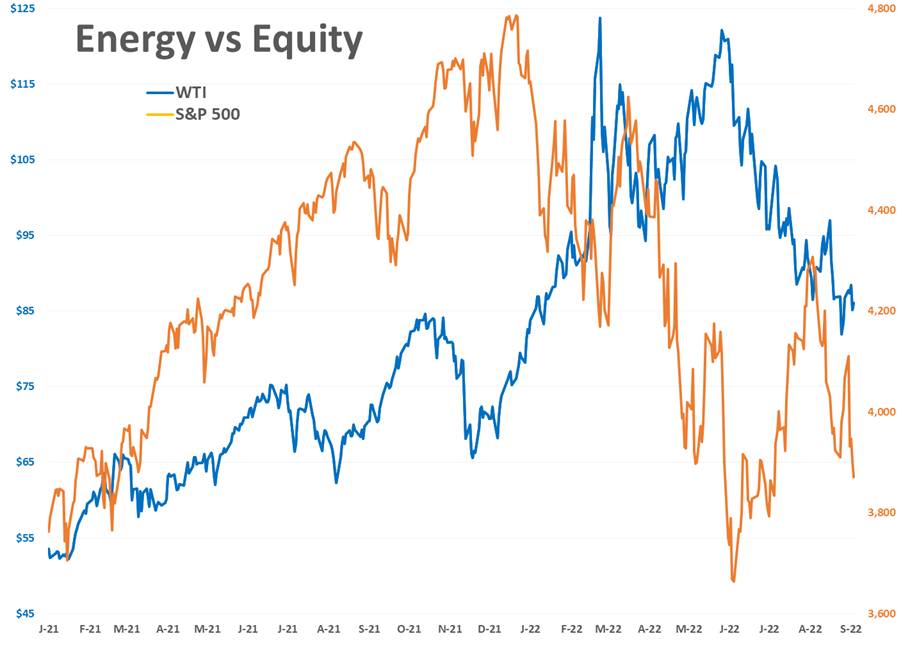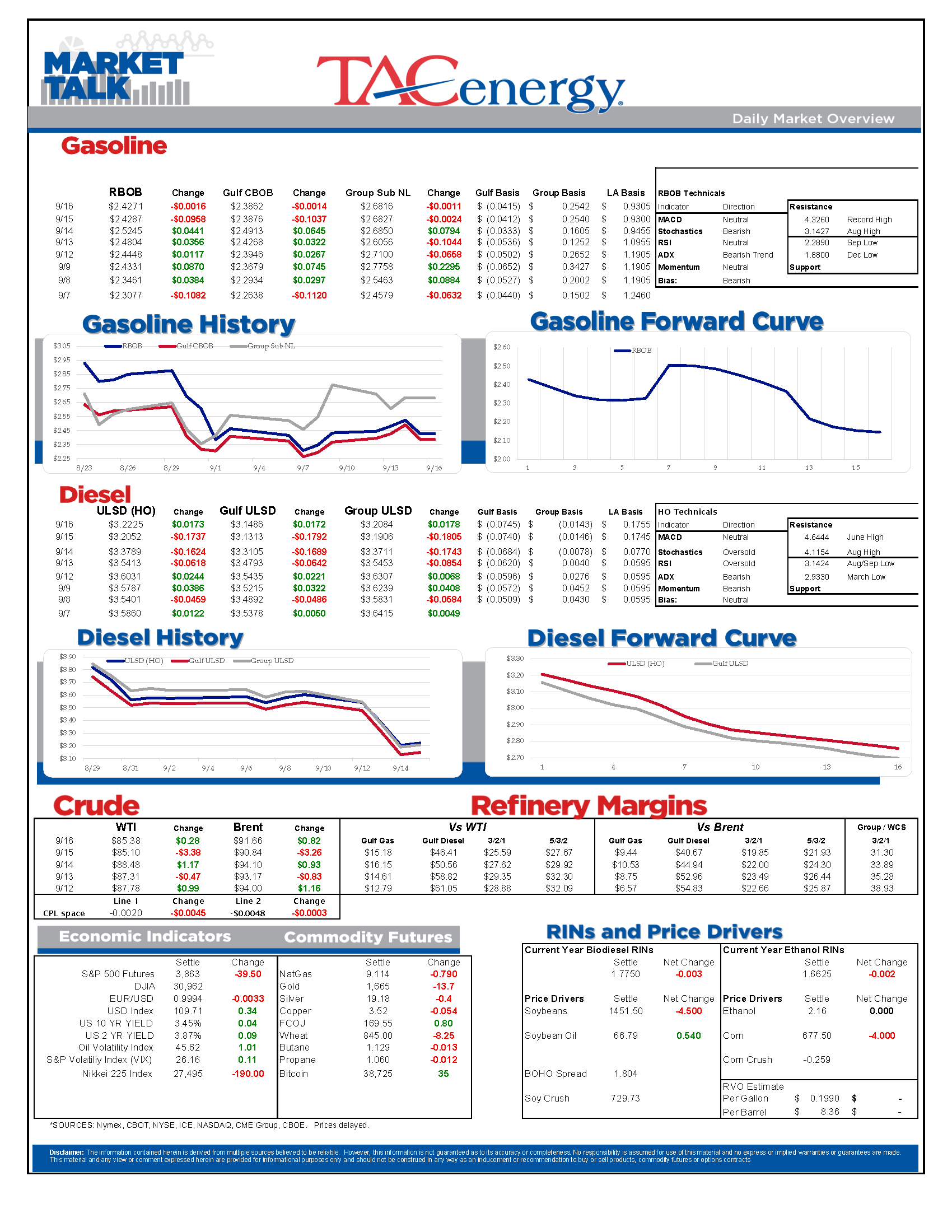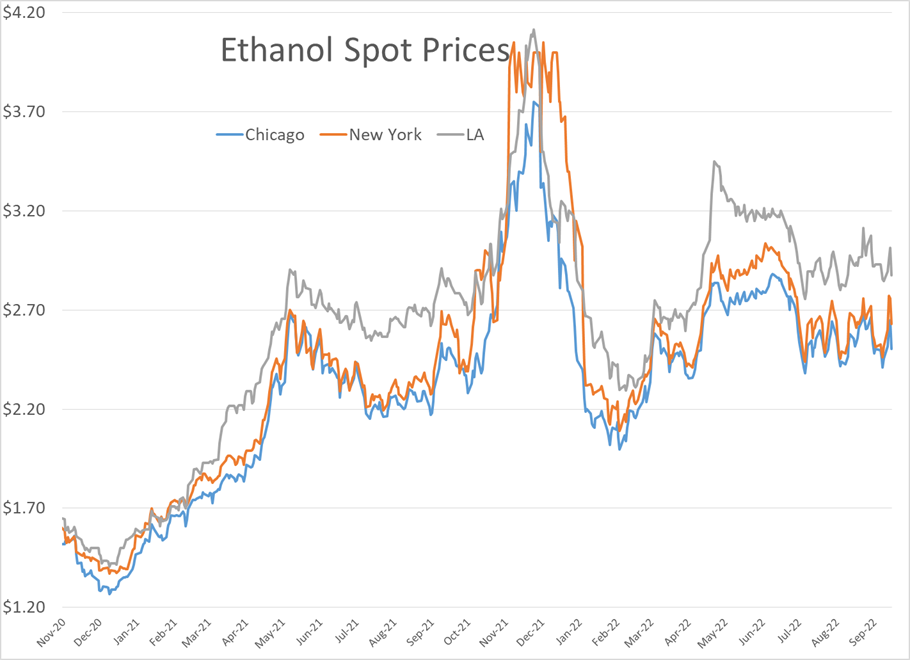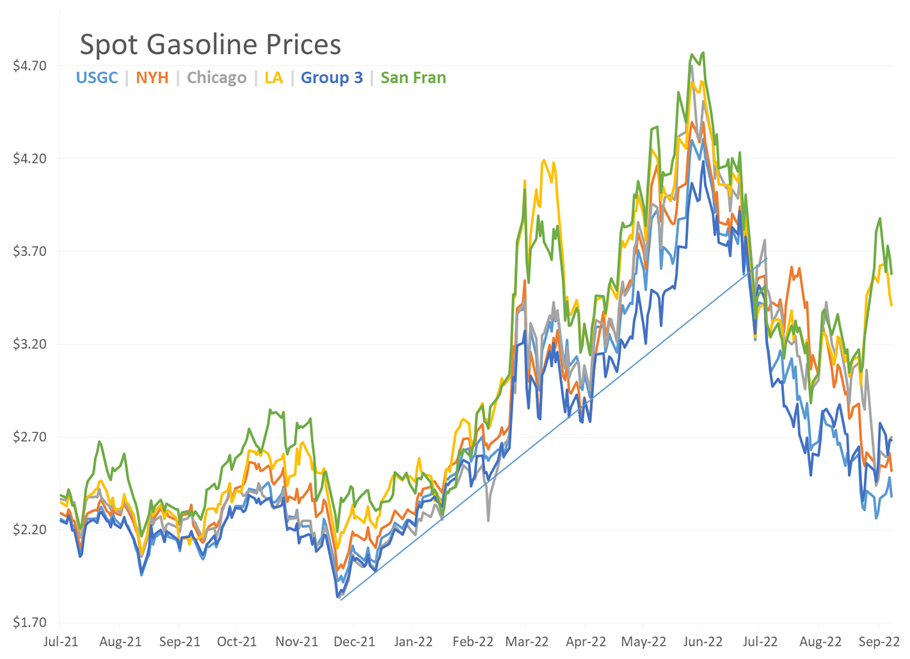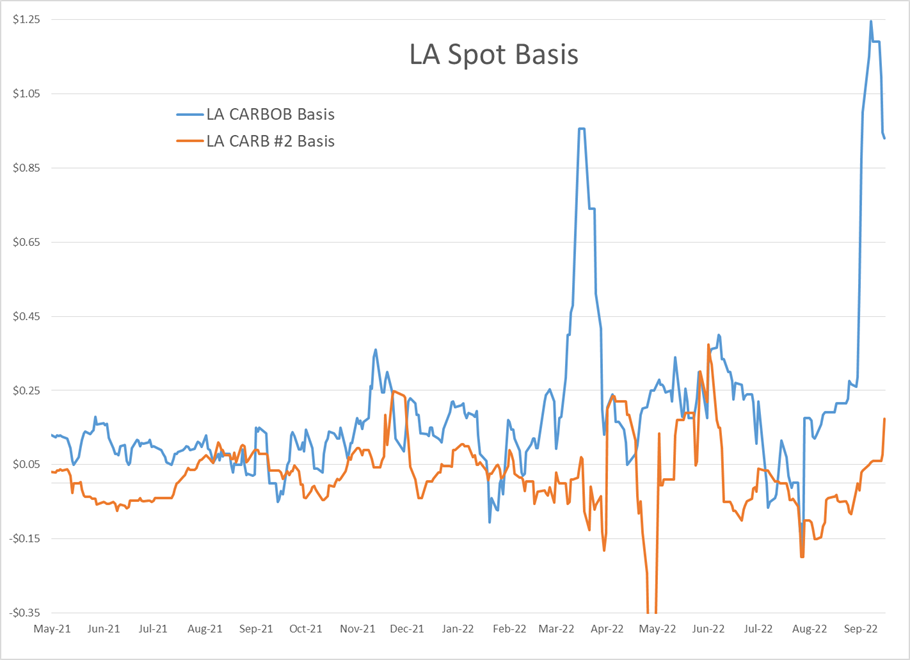Diesel Prices Have Rallied More Than 10 Cents/Gallon After Approaching 6 Month Lows Thursday

Diesel prices have rallied more than 10 cents/gallon after approaching 6 month lows Thursday, despite a warning from a shipping bellwether that a global economic slowdown is upon us that has stock markets sliding lower once again.
From a chart perspective, the price action in the back half of September looks to be pivotal as we’ve reached “rally or else” territory with a slide below $3 for diesel and $2 for gasoline looking possible this winter if support doesn’t hold.
Yesterday’s reports of a tentative deal to avert a rail strike had products from ethanol and biodiesel to natural gas all pulling back sharply after rallying earlier in the week. The market is certainly behaving as if the unions will vote to formally accept this deal, even though there’s still a risk it could be rejected. Read here for a reminder on why supply chain challenges will continue even if this deal is done.
Germany announced it would be taking over 3 Russian owned refineries in the latest move in the energy chess match. The announcement removes one of the major hurdles to Germany backing a ban on Russian crude imports, with the big question being whether or not they’ve found a replacement supply source to keep those facilities operating.
West Coast gasoline prices are continuing to cool after a huge spike to start September, but LA distillates staged a 10 cent rally of their own Thursday, largely offsetting the big move lower in futures. Diesel inventories in the region appear to be ample, yet the buying extended into October, suggesting the diesel rally may be more than a simple short squeeze as September shipping schedules come to an end.
Tropical Storm Fiona continues to look like a non-issue for energy supplies, and most models keep it off shore of the US East Coast after it passes Puerto Rico and the Dominican this weekend, but the latest track does shift slightly to the West which keeps the possibility of a hit on the eastern side of Florida open. There are two other storms being tracked by the NHC today, but neither one looks like it will be a threat to the US even if they overcome their low odds of developing in the next 5 days.
The great oil traders: Today’s interesting read on why the US government may soon be buying oil at $80 instead of $24.
Click here to download a PDF of today's TACenergy Market Talk.
News & Views
View All
Energy Futures Are Caught Up In Headline Tug-O-War This Morning
Energy futures are caught up in headline tug-o-war this morning with Canadian oil production concerns and a positive US GDP report trying to push prices higher while sinking Chinese demand worries and Gaza ceasefire hopes are applying downward pressure. The latter two seem to be favored more so far this morning with WTI and Brent crude oil futures down ~45 cents per barrel, while gasoline and diesel prices are down about half a cent and two cents, respectively.
No news is good news? Chicago gasoline prices dropped nearly 30 cents yesterday, despite there not being any update on Exxon’s Joliet refinery after further damage was discovered Wednesday. Its tough to say if traders have realized the supply situation isn’t as bad as originally thought or if this historically volatile market is just being itself (aka ‘Chicago being Chicago’).
The rain isn’t letting up along the Texas Gulf Coast today and is forecasted to carry on through the weekend. While much of the greater Houston area is under flood watch, only two refineries are within the (more serious) flood warning area: Marathon’s Galveston Bay and Valero’s Texas City refineries. However, notification that more work is needed at Phillip’s 66 Borger refinery (up in the panhandle) is the only filing we’ve seen come through the TECQ, so far.
Premiums over the tariff on Colonial’s Line 1 (aka linespace value) returned to zero yesterday, and actually traded in the negatives, after its extended run of positive values atypical of this time of year. Line 1’s counterpart, Line 2, which carries distillates from Houston to Greensboro NC, has traded at a discount so far this year, due to the healthy, if not over-, supply of diesel along the eastern seaboard.
Click here to download a PDF of today's TACenergy Market Talk.

WTI And Brent Crude Oil Futures Are Trading ~$1.50 Per Barrel Lower In Pre-Market Trading
The across-the-board drawdown in national energy stockpiles, as reported by the Department of Energy yesterday, stoked bullish sentiment Wednesday and prompt month gasoline, diesel, and crude oil futures published gains on the day. Those gains are being given back this morning.
The surprise rate cut by the People’s Bank of China is being blamed for the selling we are seeing in energy markets this morning. While the interest rate drop in both short- and medium-term loans won’t likely affect energy prices outright, the concern lies in the overall economic health of the world’s second largest economy and crude oil consumer. Prompt month WTI and Brent crude oil futures are trading ~$1.50 per barrel lower in pre-market trading, gasoline and diesel are following suit, shaving off .0400-.0450 per gallon.
Chicagoland RBOB has maintained its 60-cent premium over New York prices through this morning and shows no sign of coming down any time soon. Quite the opposite in fact: the storm damage, which knocked Exxon Mobil’s Joliet refinery offline on 7/15, seems to be more extensive than initially thought, potentially extending the repair time and pushing back the expected return date.
There are three main refineries that feed the Chicago market, the impact from one of them shutting down abruptly can be seen in the charts derived from aforementioned data published by the DOE. Refinery throughput in PADD 2 dropped 183,000 barrels per day, driving gasoline stockpiles in the area down to a new 5-year seasonal low.
While it seems all is quiet on the Atlantic front (for now), America’s Refineryland is forecasted to receive non-stop rain and thunderstorms for the next four days. While it may not be as dramatic as a hurricane, flooding and power outages can shut down refineries, and cities for that matter, all the same, as we learned from Beryl.

